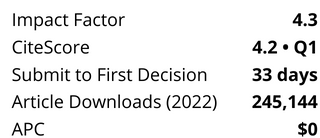This paper extends previous research to analytically identify leaks within a water distribution network (WDN), by combining hydraulic simulation and network science based data analysis techniques. The WDN model is used to run several ‘leakage scenarios’, by varying leak location (pipe) and severity, and to build a dataset with corresponding variations in pressure and flow, induced by the leak. All junctions and pipes are considered for potential pressure and flow sensors deployment; a clustering procedure on these locations identifies the most relevant nodes and pipes, and cost-effectiveness was considered. A graph is then generated from the dataset, having scenarios as nodes and edges weighted by the similarity between each pair of nodes (scenarios), in terms of pressure and flow variation due to the leak. Spectral clustering groups together similar scenarios in the eigen-space spanned by the most relevant eigen-vectors of the Laplacian matrix of the graph. This method uses superior traditional techniques. Finally, support vector machines classification learning is used to learn the relation between variations in pressure and flow at the deployed meters and the most probable set of pipes affected by the leak.
Skip Nav Destination
Article navigation
August 2015
This article was originally published in
Journal of Water Supply: Research and Technology-Aqua
Article Contents
Research Article|
May 04 2015
Cost-effective sensors placement and leak localization – the Neptun pilot of the ICeWater project
Antonio Candelieri;
1Consorzio Milano Ricerche, via Roberto Cozzi 53, Milan 20126, Italy
E-mail: candelieri@milanoricerche.it
Search for other works by this author on:
Davide Soldi;
Davide Soldi
2Department of Computer Science, Systems and Communication, University of Milano Bicocca, viale Sarca 336, Milan 20126, Italy
Search for other works by this author on:
Francesco Archetti
Francesco Archetti
1Consorzio Milano Ricerche, via Roberto Cozzi 53, Milan 20126, Italy
2Department of Computer Science, Systems and Communication, University of Milano Bicocca, viale Sarca 336, Milan 20126, Italy
Search for other works by this author on:
Journal of Water Supply: Research and Technology-Aqua (2015) 64 (5): 567–582.
Article history
Received:
March 20 2014
Accepted:
April 01 2015
Citation
Antonio Candelieri, Davide Soldi, Francesco Archetti; Cost-effective sensors placement and leak localization – the Neptun pilot of the ICeWater project. Journal of Water Supply: Research and Technology-Aqua 1 August 2015; 64 (5): 567–582. doi: https://doi.org/10.2166/aqua.2015.037
Download citation file:
Sign in
Don't already have an account? Register
Client Account
You could not be signed in. Please check your email address / username and password and try again.
Could not validate captcha. Please try again.




%20cropped.png?versionId=5947)